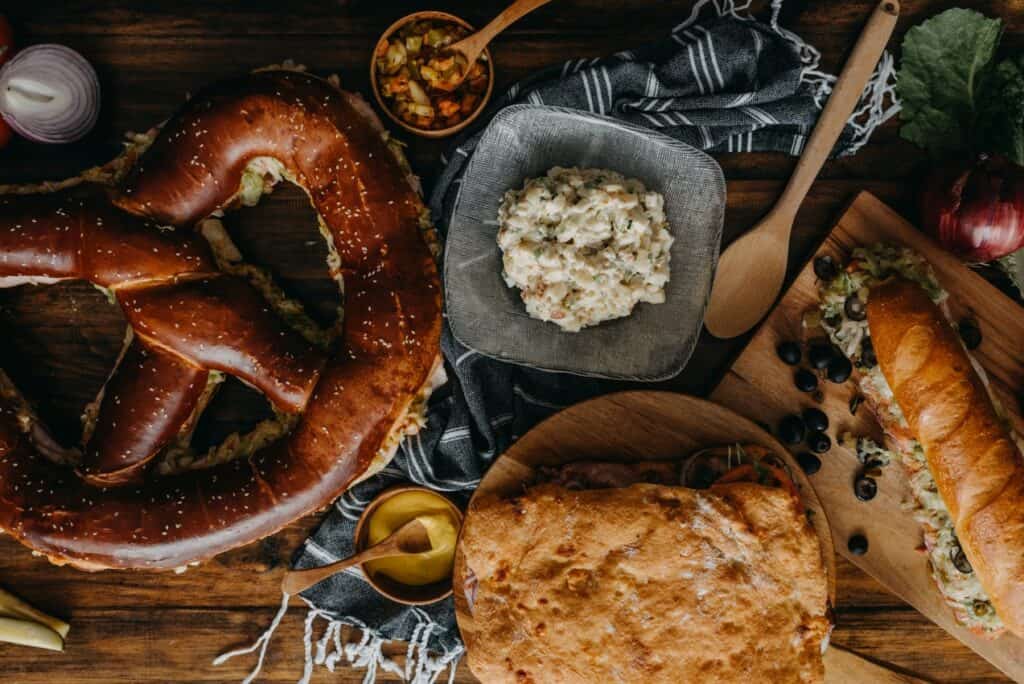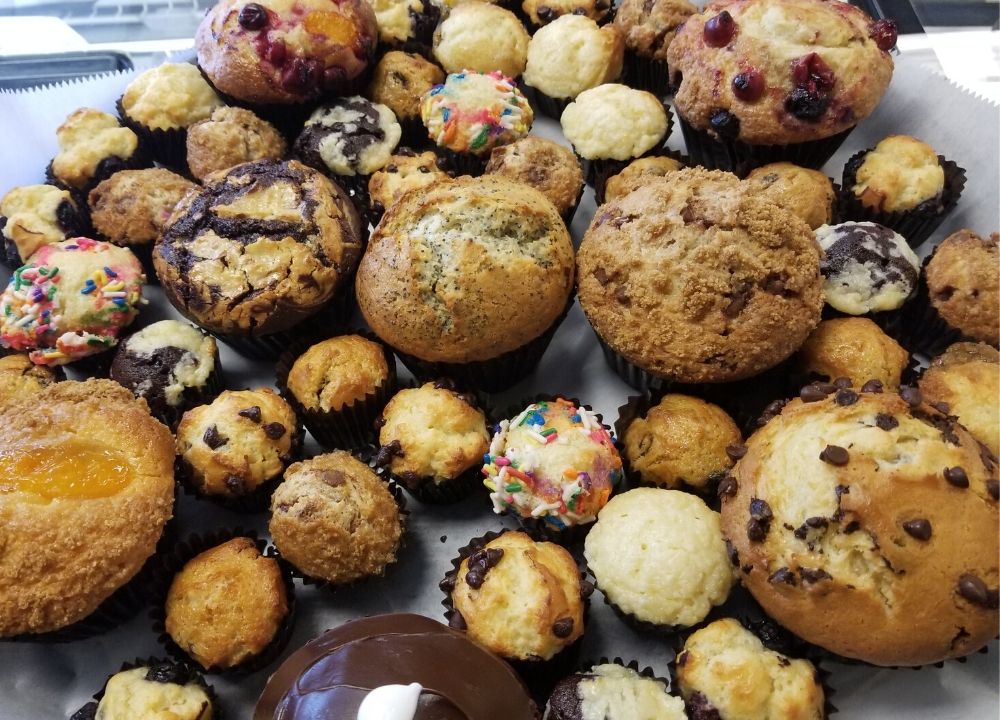Inexpensive Finger Food Catering Maddington for Any Kind Of Event
Inexpensive Finger Food Catering Maddington for Any Kind Of Event
Blog Article
Recognizing the Art of Pastry Shop Products: From Newly Baked Breads to Irresistible Pastries and Finger Foods
The detailed art of pastry shop items encompasses a range of methods and ingredients that transform basic elements into culinary delights. From the science behind the perfect loaf of bread, where fermentation and gluten growth play pivotal roles, to the skill needed for creating layered pastries, each aspect discloses a compelling story of workmanship. Moreover, the adaptability of finger foods illustrates how flavor and structure can be artfully incorporated to involve diverse taste preferences. As we discover these components, one might question: what underlying principles control the success of these beloved productions?
The Scientific Research of Bread Making
At the heart of every loaf of bread lies an interesting interaction of chemistry and biology. The procedure of bread making starts with the combination of flour, water, yeast, and salt-- each component playing a crucial function in the end product. Flour has proteins, mostly glutenin and gliadin, which, when blended with water, form gluten (Birthday Party Maddington). This flexible network is crucial for capturing gases produced throughout fermentation.
Yeast, a living organism, ferments the sugars present in the flour, producing co2 and alcohol while doing so. The co2 gas creates bubbles in the dough, causing it to rise and establish a light appearance. The temperature level and humidity during fermentation significantly influence yeast activity and, consequently, the bread's taste and texture.

Mastering Pastry Methods
How can one accomplish the delicate balance of texture and taste that defines extraordinary bread? Grasping pastry methods requires a deep understanding of components, approaches, and the science behind them. Essential to this craft is the option of top quality active ingredients-- flour, butter, sugar, and eggs-- each playing a critical function in the final item's flavor and texture.
The technique of lamination, which involves folding layers of dough and butter, produces the preferred flakiness in breads like croissants and smoke bread. Accuracy in temperature is essential, as butter must continue to be chilly to make sure ideal layers. Proper blending techniques, such as the creaming strategy for cakes, ensure even consolidation of air and fat, resulting in a light and airy crumb.
In addition, keeping the right moisture levels during cooking can substantially influence the result, making certain that pastries climb properly and accomplish that golden-brown surface. The art of bread also demands persistence and technique; each attempt improves one's skill and understanding of the complex balance called for to produce tempting pastries that delight the senses. Proficiency in these techniques ultimately identifies an experienced pastry cook from an amateur.
Kinds of Finger Foods
The globe of culinary delights expands past breads to incorporate a wide array of finger foods, which are commemorated for their ease and adaptability. These bite-sized treats are ideal for celebrations, offering a selection of flavors and appearances that cater to diverse palates.

On the sweeter side, bite-sized cupcakes and miniature tarts use a delightful finish to any meal, appealing to those with a sweet tooth. Moreover, cheese and charcuterie boards serve as a sophisticated selection, allowing visitors to personalize their attacks with an array of meats, cheeses, fruits, and nuts.
Taste Profiles in Baking
Cooking is a detailed dance of flavor profiles that combines wonderful, tasty, and umami notes to produce a harmonious experience for the taste. Understanding these accounts is crucial for bakers looking for to boost their productions.
Active ingredients such as delicious chocolate and sugar introduce complex pleasant notes that can either control or complement various other tastes. Components like cheeses, spices, and herbs can transform a simple dough right into a diverse taste experience.
Umami, frequently overlooked in baking, plays a considerable role in improving flavors. Active ingredients such as aged cheeses, fermented products, or perhaps certain nuts add to a tasty you can look here deepness that enhances general preference.
In addition, the interplay of acidity from active ingredients like buttermilk or citrus enthusiasm can lighten up flavors, providing a refreshing counterpoint to sweetness. By thoughtfully combining these flavor accounts, bakers can craft products that resonate with varied palates, creating a memorable culinary experience. Inevitably, understanding taste accounts is crucial to advancement worldwide of baking.
Crucial Baking Devices and Active Ingredients
Recognizing taste accounts in cooking collections the stage for picking the right tools and active ingredients that help with the creation of outstanding baked goods. The foundation of effective baking depend on having vital devices available. Key products include mixing bowls, measuring mugs, and spoons for accuracy, in addition to a tough stand mixer or hand mixer for uncomplicated blending. A trusted set of cooking pans-- such as sheet pans, loaf pans, and cake frying pans-- is critical for accomplishing wanted shapes and appearances.
Flour offers as the foundation of a lot of dishes; choosing the best type-- be it bread, all-purpose, or bread flour-- can significantly impact the result. Cooking powder and baking soda are necessary for developing lift in cakes and breads.
In addition, including taste boosters like vanilla remove, flavors, and citrus enthusiasm can elevate your productions. By making certain access to these fundamental devices and ingredients, bakers can with confidence start their culinary journey, crafting a varied variety of fascinating baked click here now products.
Final Thought
Mastery in bread making, bread prep work, and finger food presentation discloses the elaborate relationships between procedures and ingredients. Birthday Catering Maddington. Discovering diverse flavor profiles enhances the baking experience, while crucial devices and components offer the structure for success.
Just how can one achieve the delicate equilibrium of appearance and flavor that defines extraordinary pastry? Essential to this craft is the selection of premium components-- flour, butter, sugar, and eggs-- each playing an essential role in the final item's taste and structure.

Comprehending taste accounts in baking sets the phase for selecting the right tools and active ingredients that promote the creation of remarkable baked products. Checking out varied flavor profiles enriches the baking experience, while crucial tools and ingredients provide the structure for success.
Report this page